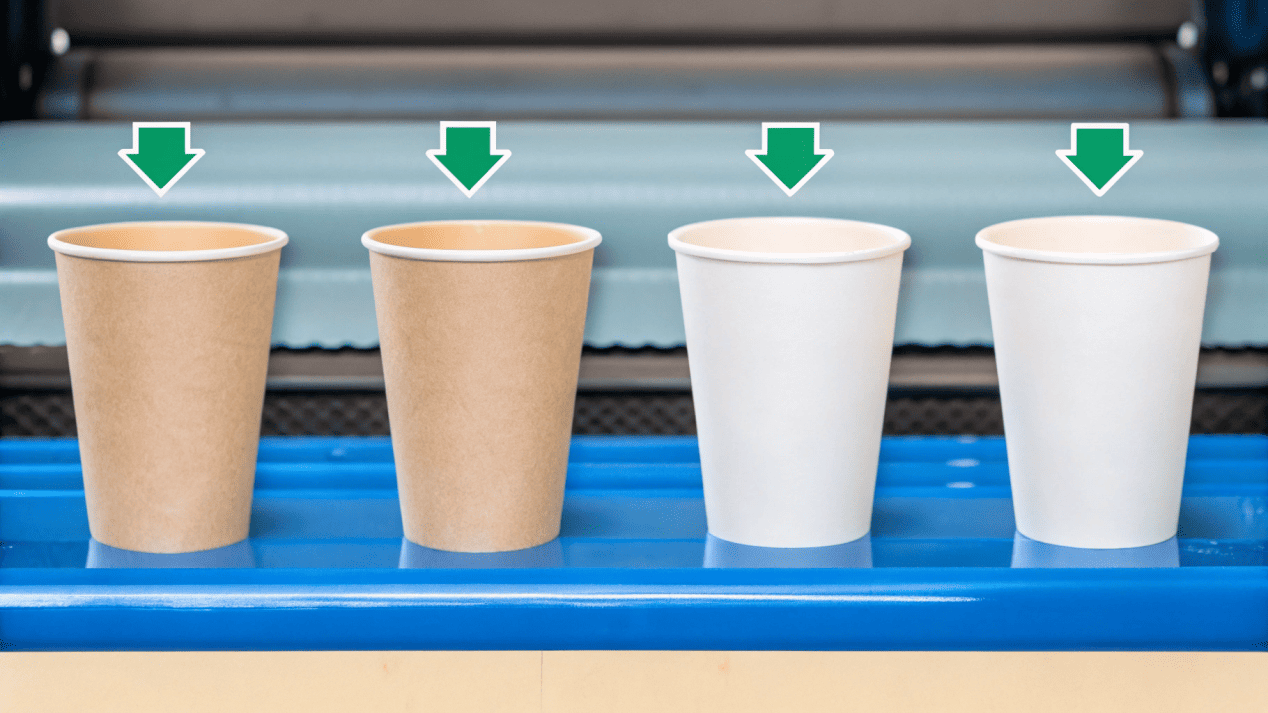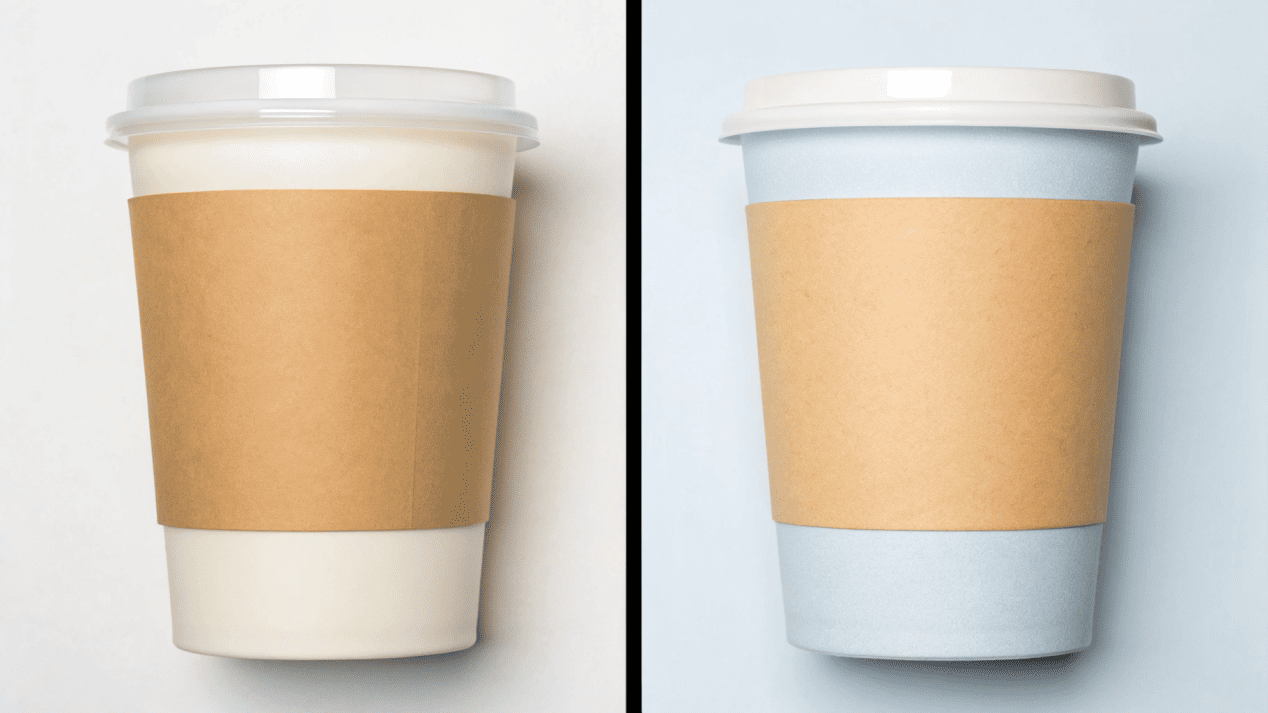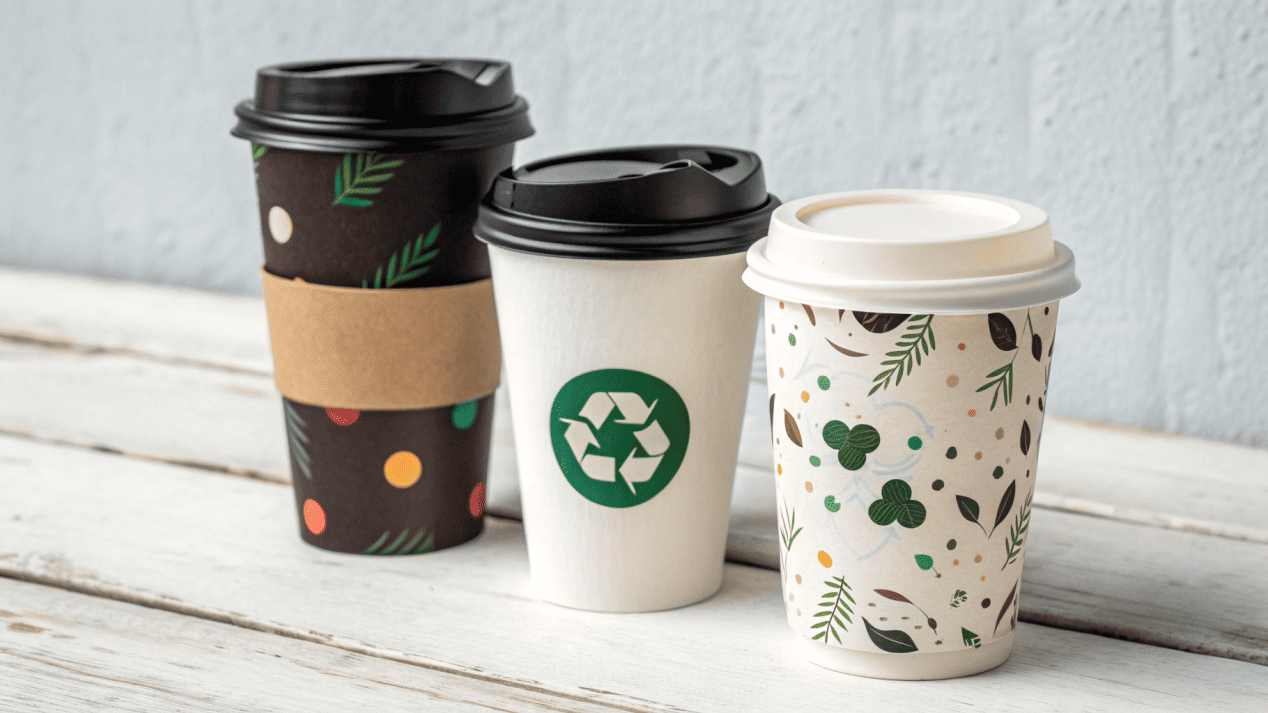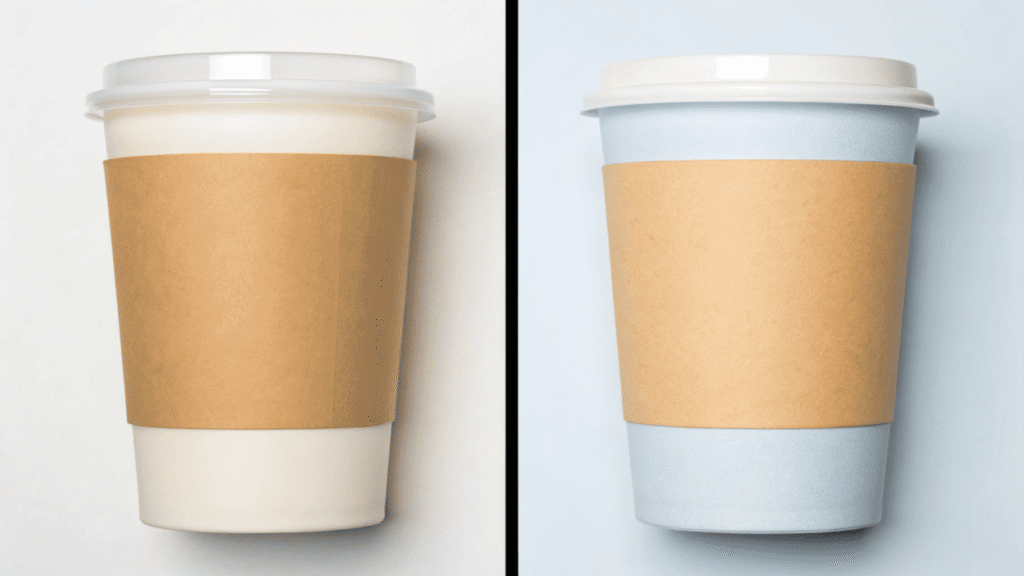Your brand proudly uses "eco-friendly" paper cups. But unknown to you, their hidden plastic lining means they are still destined for a landfill, undermining your entire sustainability promise.
A truly recyclable paper cup uses a special water-based coating instead of the traditional plastic (PE) lining. This coating is engineered to break down during the standard paper recycling process, allowing the paper to be recovered.

For years, I watched well-meaning clients buy PE-lined cups, thinking they were being green. They were paying for a promise that couldn't be kept, as most recycling facilities reject these cups. It was frustrating to see good intentions lead to more landfill waste. That's why we invested so heavily in mastering water-based coatings. It’s not just another product for us; it’s an honest solution to a huge industry problem. To understand why it's so revolutionary, you first have to understand how it's made. It all comes down to a simple difference in its core structure.
How Is a Water-Based Coating Different From a Plastic Lining?
All waterproof cups look similar on the inside. This makes it impossible for you to tell if you're buying a genuinely recyclable solution or just another product that's destined for the landfill.
A plastic lining is like wallpaper; a separate plastic sheet fused onto the paper. A water-based coating is like paint; a liquid barrier applied directly that integrates with the paper, allowing it to easily separate during recycling.

As an engineer, the best way I can explain the difference is with an analogy: applying wallpaper versus painting a wall.
A traditional PE (Polyethylene) or PLA (Bioplastic) lining is like wallpaper. A separate sheet of plastic is manufactured first. Then, through a process called lamination, this sheet is fused to the paperboard using intense heat and pressure. The problem is that this creates a composite material. The plastic and paper are so tightly bonded that separating them is nearly impossible for standard recycling equipment. The entire cup is treated as trash.
A water-based coating, on the other hand, is like paint. It starts as a liquid—a special barrier formula suspended in water. We apply this liquid directly onto the paper's surface with extreme precision. The paper then goes through a drying process where the water evaporates. This leaves behind a thin, highly effective, and fully integrated waterproof barrier. It is not a separate layer; it is part of the paper itself. This fundamental structural difference is what makes it truly recyclable.
| Feature | Plastic (PE/PLA) Lining | Water-Based Coating |
|---|---|---|
| Analogy | Wallpaper (Separate layer) | Paint (Integrated layer) |
| Application | Lamination (Heat & Pressure) | Liquid application & drying |
| Structure | Composite Material | Integrated Barrier |
| Recyclability | Contaminant (Goes to landfill) | Truly Recyclable (Paper is recovered) |
Why Should My Brand Invest in Water-Based Coatings?
Switching to a new, more advanced packaging technology feels like a risk and an extra cost. Meanwhile, your competitors might be using cheaper, less honest options that look the same on the surface.
You should invest because it provides true recyclability, which builds undeniable brand authenticity and customer trust. It also offers superior performance without affecting your product's taste, justifying a premium market position.

The benefits of this technology go far beyond just the environment; they directly impact your brand value and customer perception.
First and foremost is True Recyclability. In the paper recycling process, which is called "repulping," paper is mixed with water in a giant vat. A water-based coating is specifically designed to break down and disperse in this process. This allows the valuable paper fibers to be easily screened and recovered to make new paper products. It fulfills the promise of a circular economy and ends the greenwashing cycle.
This leads to the second benefit: Brand Authenticity. Today's customers are smart and skeptical. They can spot greenwashing. When you can honestly and confidently state, "Our cups are truly recyclable thanks to a water-based coating," your brand gains immense credibility. It proves your commitment to sustainability is real, not just a marketing slogan. This builds loyalty and allows you to own a premium position in the market.
Finally, there is Excellent Performance. A common fear is that a new technology might not work as well. Our advanced water-based coatings provide a superior barrier against liquids, oils, and grease. They perform flawlessly for everything from hot coffee to frozen ice cream, ensuring your cup maintains its structural integrity with no risk of leakage or sogginess. Plus, they are completely neutral and don't impart any "plasticky" taste, ensuring your customers taste your product, and only your product.
What Kinds of Products Can Use Water-Based Coatings?
You might think that this new, advanced coating is a niche solution, available only for a specific type of premium coffee cup. This belief could stop you from making your entire product line sustainable.
Water-based coatings are extremely versatile and can be used on almost any paper food packaging. This includes single and double-wall hot cups, cold drink cups, ice cream bowls, and even takeaway food containers.

This technology is not a niche solution. It is a robust and versatile replacement for plastic linings across the entire food service industry. As your packaging partner, we can apply this technology to virtually your entire product line, creating a consistent and authentic sustainability message for your brand.
Here are the primary applications:
- Hot Coffee & Tea Cups: We apply it to both single-wall and double-wall cups, providing a reliable and truly recyclable solution for cafes, offices, and restaurants that want to show their commitment to the environment.
- Cold Drink Cups: It's a perfect barrier for sodas, juices, and smoothies, replacing the PE-lined cups that contaminate recycling streams.
- Ice Cream & Frozen Yogurt Cups: The coating provides an excellent moisture barrier to prevent sogginess from frozen products, while ensuring the cup can be easily recycled after use.
- Food Containers: This is a huge area of growth. The coating's barrier against grease and liquids makes it ideal for takeaway paper bowls used for soups, noodles, and salads.
The message is simple: any brand currently using a traditional plastic-lined paper cup can upgrade to a water-based coated cup. You can instantly elevate your sustainability profile without making any compromises on performance or product safety.
If This Technology Is So Good, Why Isn't Everyone Using It?
This water-based coating technology sounds perfect, maybe even too perfect. This naturally makes you wonder, "what's the catch?" If it's superior, why isn't it the industry standard everywhere?
Many factories don't use it because of the high technical skill and specialized machinery required. Developing a safe, effective formula is also expensive, and the upfront cost can be slightly higher than cheap, plastic-lined cups.

This is a fair and important question. The truth is, there are real challenges that keep most factories from adopting this superior technology. These challenges are also why mastering it has become a core advantage for us at Haokelao Packaging.
The biggest hurdle is Technical Precision. Applying a liquid coating is far more complex than just laminating a sheet of plastic. It requires highly specialized machinery with precise controls over coating thickness, along with advanced, multi-stage drying technology. If the coating is too thin, it will leak. If it's too thick, it wastes material and may not dry properly. Most factories have not made the significant investment in this equipment and the training required to operate it.
Next is Formulation Expertise. Not all water-based coatings are created equal. As a company, we have invested heavily in research and development to create formulas that provide a perfect barrier, comply with the strictest international food safety regulations like FDA and BRC, and also break down perfectly during recycling. This is a delicate balance that requires deep chemical and engineering knowledge.
Finally, there is a Slight Cost Difference. Mass-produced PE cups from older factories can be marginally cheaper upfront. However, visionary brands understand this is not a "cost"—it is an investment. It's an investment in brand authenticity, in future-proofing your business against new plastic regulations, and in aligning with the values of modern consumers, which ultimately drives much higher returns.
Conclusion
Water-based coatings offer true recyclability that authenticates your brand's green commitment. It turns your paper cup from just a container into a powerful, honest, and sustainable marketing asset.
